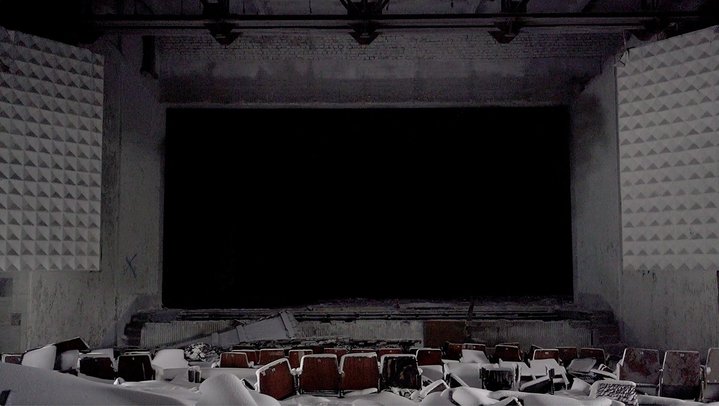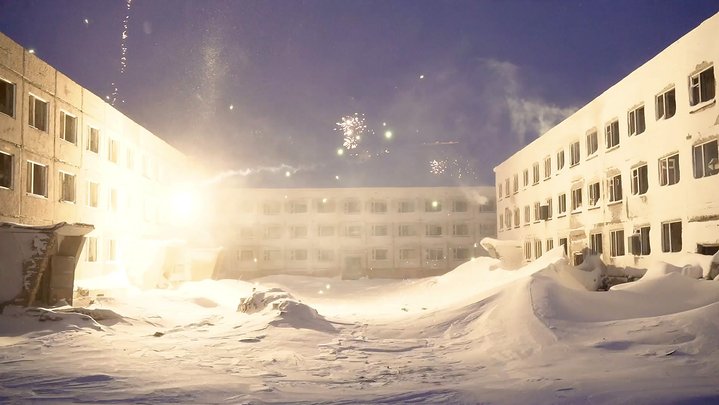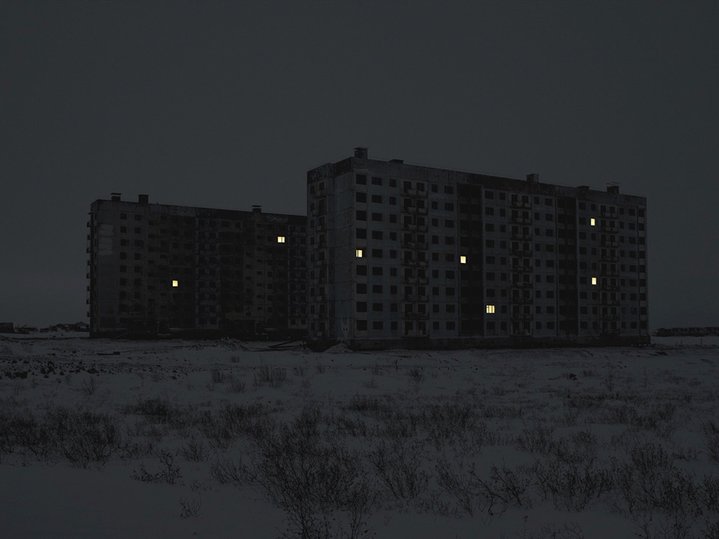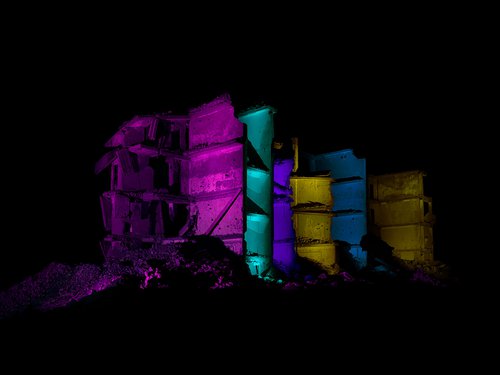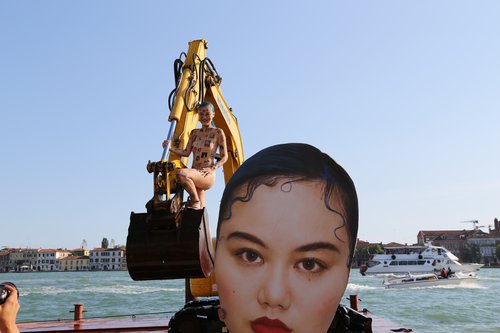Danila Tkachenko. Fireworks, 2022. Video still. Courtesy of the artist
Russian artist Danila Tkachenko reflects on colonialism in Venice
Danila Tkachenko, a winner of the coveted World Press Photo prize, who is currently in exile and under investigation by the Russian authorities for a failed street art action on Victory Day, has a solo show at Venice’s Galleria in Corte of works looking at colonial forces within Russia.
For his current Venetian exhibition ‘Somewhere/Nowhere’ the artist has brought together (either in whole or in parts) different projects from his oeuvre spanning several years of work. There is ‘Monuments’, ‘Planetarium’, ‘Colonies’ and two new videos called ‘Fireworks’ and ‘Scenes’ and combined in a single ambitious exhibition they evoke visions of the crumbling Russian outskirts as former footholds from which the once sprawling metropolis went in retreat. He shows it is a withdrawal not only from the Moscow suburbs or in nearby provinces but also remote northeastern regions. The artist is interested in how this seems to be happening everywhere in Russia; everywhere, anywhere, and yet somehow also nowhere, alluding to the title of the show. What feels distant and inevitable is on repeat, in the now and thus preventable.
It may be a somewhat controversial vision, yet as the artist points out in his work there is a logic and there are facts. For his 2017 series ‘Monuments’, Tkachenko travelled to villages where he found the ruins of churches, you might ask why they had not been given protected status as monuments of architecture. Tkachenko photographed them, creating large constructions around them, evocative of suprematist geometry. He photographed and then dismantled these temporary structures and took care to leave the ruins as they were before his interventions. His main message here is one of devastation, yet also about the fertilized soil from which Russian Modernism sprouts. And modern life inevitably intensified the devastation, leading to a retreat from the traditional Russian civilization of past centuries. For the sake of accelerated industrialization, traditional life was systematically destroyed by the Soviet authorities. Later, in the post-Soviet world, agriculture did not require many people, and it was too expensive to maintain an acceptable infrastructure. Thus, the Russian countryside has been dying out, and this process seems unstoppable. Usable land is being cultivated by farmers. The villages near cities and major roads are increasingly becoming clusters of holiday homes, while those further away are gradually disappearing. The stone ruins of most of the churches will likely never be rebuilt again as there is no community to join them. All you can do is admire them with a sense of melancholy and nostalgia.
Displayed opposite the works from this series, and separated with a black curtain, is Planetarium, in which the theme of a colonizer in retreat seems even more evocative. Empty blue houses merge with the blue sky in towns that were built beyond the Arctic Circle during Soviet times and have been long since abandoned. Some oil-mining settlements are still alive and thriving, but many are not. It has now become common practice to work on a rotational basis in places which are hard to live in; and it is much cheaper. As a result, neighborhoods once created as urban models, stand as empty monuments to heroic and pointless attempts to inhabit an inhumane alien climate. Tkachenko illuminates the windows of the abandoned houses which look like constellations in outer space.
In ‘Colonia’, a new series the artist is currently working on, he plays with geometric images which appear to have been painted in watercolour. These works are palimpsests: an overlay of views of houses made of standard concrete slabs frozen in permafrost. There is some internal logic in the repeated patterns of ‘cells’ in the landscape but it is hard to see it, just as the logic of ant colonies is incomprehensible to an untrained viewer. But the artist shows us on a basic level how mere abstraction in and of itself can bring a sense of pleasure to the eye. On a deeper level we can be reminded that much human activity is based on calculation and rationality of a social nature even if these also ultimately can lead to failure of megalomaniac construction projects.
Tkachenko normally works with assistants or volunteers, sometimes numbering in the dozens as there is a need for exceptionally complex orchestration and directing in creating his projects. With an emphasis on the poetics of interaction, he has realized numerous ambitious and large-scale performances in different regions of Russia, such as in the environs of Kaliningrad and in the Altai mountains. In these works, he was exploring notions of historical memory, and they required a huge number of participants to make them happen. His sudden, forced emigration from Russia sadly put a stop to everything.
Instead, he has now turned to making videos. ‘Fireworks’ is literally a Roman candle firefight between two abandoned prefab houses. It is unclear who is fighting whom, people are not visible in the shot and the artist leaves us wondering, who is having fun here. Is it some form of entertainment? Is it about death? In documentary footage, these things might appear the same. Another work, ‘Scene’ is the literal embodiment of the fog of war, through which it is impossible to see what is really happening. Thick smoke fills and displaces all the visible space on the stage. The timeless melancholy of the Russian art group Bluesoup, known for their meditative video phantasies, and Tkachenko’s reflections on the events of recent months hang in the air in these new works. The fog and fireworks take place ‘somewhere’ in the absence of our rational human mind, yet they are exceptionally real. It is another way of saying goodbye to the past. Colonies are abandoned by the metropolis either peacefully or through bloodshed, but it inevitably happens.







